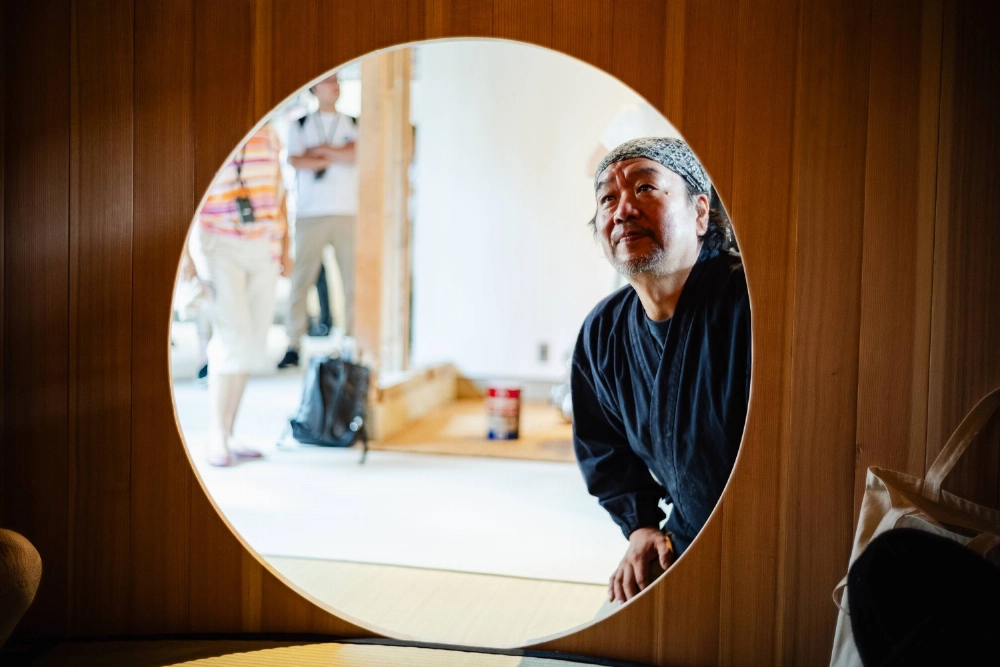In a quiet neighborhood of Kanazawa, behind a heavy wooden door flanked by rows of filtered glass, a tea ceremony is underway. The smells of cedar, tatami, straw and matcha blend together and curl into the nostrils of the rapt audience. For all its pleasing sensuality, this is not a classic ochakai gathering. For one, the tea master is spooning matcha out of a large can marked Nissan motor oil; for another, the tea house is built like a bucket.
“I always wanted to go inside a kioke,” says Shuji Nakagawa at art and craft event Go for Kogei, referring to the traditional wooden buckets of which he is a master craftsman. “But I couldn’t make people smaller, so I thought, ‘I’ll have to make this bucket bigger.’”
Nakagawa is not a bucket upstart. The 57-year-old Kyoto native is a third-generation mokkōgei (woodworking) craftsman; since childhood, his father’s workshop was his playground, and wood scraps were his toys. At Go for Kogei, an annual festival in Japan’s Hokuriku region that opened on Sept. 13, he unveils his latest imaginings: woodcrafts-based architecture.


















With your current subscription plan you can comment on stories. However, before writing your first comment, please create a display name in the Profile section of your subscriber account page.